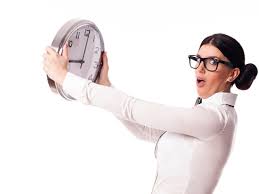Hello!
 Intelligence Quotient (IQ) tests have captivated people worldwide, sparking curiosity, challenge, and sometimes anxiety. Designed to measure cognitive abilities like problem-solving, logical reasoning, and pattern recognition, these tests offer valuable insights into mental potential. Whether you’re preparing for a formal assessment, seeking self-improvement, or simply intrigued by cognitive evaluation, this guide dives into everything you need to know about IQ test questions in 2025. From understanding scores to exploring question types, preparation strategies, and sample questions, you’ll be equipped to tackle IQ tests with confidence and leverage results for personal growth.
Intelligence Quotient (IQ) tests have captivated people worldwide, sparking curiosity, challenge, and sometimes anxiety. Designed to measure cognitive abilities like problem-solving, logical reasoning, and pattern recognition, these tests offer valuable insights into mental potential. Whether you’re preparing for a formal assessment, seeking self-improvement, or simply intrigued by cognitive evaluation, this guide dives into everything you need to know about IQ test questions in 2025. From understanding scores to exploring question types, preparation strategies, and sample questions, you’ll be equipped to tackle IQ tests with confidence and leverage results for personal growth.
What is an IQ Test?
 An IQ test is a standardized assessment that evaluates cognitive abilities across areas like verbal comprehension, perceptual reasoning, working memory, and processing speed. Typically administered in controlled settings, these tests use diverse question formats to gauge intellectual potential. In 2025, digital and adaptive IQ tests are gaining traction, tailoring question difficulty to the test-taker’s performance for more accurate results.
An IQ test is a standardized assessment that evaluates cognitive abilities across areas like verbal comprehension, perceptual reasoning, working memory, and processing speed. Typically administered in controlled settings, these tests use diverse question formats to gauge intellectual potential. In 2025, digital and adaptive IQ tests are gaining traction, tailoring question difficulty to the test-taker’s performance for more accurate results.
Why Are IQ Tests Important?
 IQ tests serve multiple purposes:
IQ tests serve multiple purposes:
- **Educational Placement**: Schools use them to identify gifted students or those needing extra support, ensuring tailored learning experiences.
- **Career Guidance**: Certain professions, like tech or finance, incorporate IQ tests in hiring to assess problem-solving skills.
- **Research**: Scientists rely on IQ data to study cognitive development and environmental influences on intelligence.
- **Personal Development**: Individuals use test results to pinpoint strengths, address weaknesses, and set growth goals.
What to Expect in This Guide
 This comprehensive guide covers:
This comprehensive guide covers:
- The meaning and interpretation of IQ scores
- Common types of IQ test questions
- Strategies to prepare and enhance performance
- 100+ sample IQ test questions with answers
- Tips for analyzing results and fostering personal growth
- Myths and misconceptions about IQ testing
- The future of intelligence assessment in 2025
Understanding IQ Scores
IQ scores reflect cognitive abilities relative to the general population, normalized with a mean of 100 and a standard deviation of 15. About 68% of people score between 85 and 115, with higher or lower scores indicating exceptional or below-average abilities.
 IQ Score Ranges:
IQ Score Ranges:
- **130+**: Very Superior (2.2% of the population)
- **120–129**: Superior (6.7%)
- **110–119**: High Average (16.1%)
- **90–109**: Average (50%)
- **80–89**: Low Average (16.1%)
- **70–79**: Borderline (6.7%)
- **Below 70**: Extremely Low (2.2%)
 Factors Influencing Scores:
Factors Influencing Scores:
- **Education**: Quality schooling enhances cognitive skills.
- **Cultural Background**: Cultural biases in tests can skew results for certain groups.
- **Test Experience**: Familiarity with formats boosts performance.
- **Health**: Stress, fatigue, or poor nutrition can lower scores.
- **Age**: Cognitive abilities evolve, impacting scores over time.
- **Practice**: Regular mental exercises improve test outcomes.
Understanding these factors contextualizes your score, emphasizing that IQ is just one facet of intelligence.
Types of IQ Test Questions
IQ tests feature varied question types to assess different cognitive domains.
 Here are the main categories in 2025:
Here are the main categories in 2025:
- **Numerical Sequences**: Test pattern recognition and mathematical reasoning.
*Example*: What comes next in 2, 4, 8, 16, ?
*Answer*: 32 (each number doubles).
- **Verbal Reasoning**: Evaluate language comprehension via analogies or synonyms.
*Example*: BIG is to SMALL as TALL is to: a) High b) Short c) Narrow d) Thin
*Answer*: b) Short (opposites).
- **Spatial Reasoning**: Assess mental manipulation of shapes or 3D visualization.
*Example*: Which shape completes the pattern? (Requires visual; typically involves rotating figures.)
*Answer*: (Depends on specific pattern; practice with similar visuals.)
- **Logical Reasoning**: Test deductive reasoning or logic puzzles.
*Example*: All cats have tails. Some animals with tails are not mammals. Are all cats mammals? a) Yes b) No c) Cannot be determined
*Answer*: c) Cannot be determined.
- **Pattern Recognition**: Identify sequences in shapes or symbols.
*Example*: What comes next in a visual sequence? (Requires image; typically involves repeating shapes.)
*Answer*: (Depends on specific pattern.)
Preparing for an IQ Test
While IQ tests measure innate abilities, preparation can enhance performance by sharpening skills and reducing anxiety.
 Here’s how:
Here’s how:
- Improve Cognitive Skills:
- Read diverse materials to boost vocabulary and comprehension.
- Play brain games like puzzles or chess to enhance reasoning.
- Learn a new skill, such as coding or a language, to increase mental flexibility.
- Exercise regularly to improve cognitive function.
- Practice mindfulness to reduce stress and improve focus.
- Ensure 7–9 hours of sleep for optimal brain performance.
 - Practice Strategies:
- Practice Strategies:
- Familiarize yourself with question formats using online practice tests.
- Time your practice to mimic test conditions, improving speed and accuracy.
- Analyze mistakes to understand errors and improve weak areas.
- Take full-length practice tests to build stamina.
- Manage Test Anxiety:
- Prepare thoroughly to boost confidence.
- Use deep breathing or visualization to stay calm.
- Maintain perspective: an IQ score doesn’t define your worth.
- Get adequate rest before the test to stay sharp.
100 Sample IQ Test Questions with Answers
Below are 100 sample questions across key categories to help you practice. Note: Spatial and pattern recognition questions typically require visuals, so focus here is on numerical, verbal, and logical reasoning.
 Numerical Sequences (30 Questions):
Numerical Sequences (30 Questions):
1. What comes next? 2, 5, 10, 17, 26, ?
*Answer*: 37 (difference increases by 1: 3, 5, 7, 9, 11)
2. What comes next? 3, 8, 15, 24, 35, ?
*Answer*: 48 (difference increases by 2: 5, 7, 9, 11, 13)
3. What comes next? 7, 14, 23, 34, 47, ?
*Answer*: 62 (difference increases by 2: 7, 9, 11, 13, 15)
4. What comes next? 4, 9, 16, 25, 36, ?
*Answer*: 49 (squares: 2², 3², 4², 5², 6², 7²)
5. What comes next? 1, 4, 9, 16, 25, ?
*Answer*: 36 (squares: 1², 2², 3², 4², 5², 6²)
6. What comes next? 11, 13, 17, 19, 23, ?
*Answer*: 29 (prime numbers)
7. What comes next? 5, 10, 20, 40, 80, ?
*Answer*: 160 (multiply by 2)
8. What comes next? 12, 17, 24, 33, 44, ?
*Answer*: 57 (difference increases by 2: 5, 7, 9, 11, 13)
9. What comes next? 10, 15, 22, 31, 42, ?
*Answer*: 55 (difference increases by 2: 5, 7, 9, 11, 13)
10. What comes next? 6, 12, 18, 24, 30, ?
*Answer*: 36 (add 6)
11. What comes next? 9, 16, 25, 36, 49, ?
*Answer*: 64 (squares: 3², 4², 5², 6², 7², 8²)
12. Complete: 1, 8, 27, 64, ?
*Answer*: 125 (cubes: 1³, 2³, 3³, 4³, 5³)
13. Complete: 2, 4, 8, 16, ?
*Answer*: 32 (powers of 2)
14. Complete: 1, 3, 6, 10, ?
*Answer*: 15 (triangular numbers: 1, 1+2, 1+2+3, 1+2+3+4)
15. Complete: 1, 2, 6, 24, ?
*Answer*: 120 (factorials: 1!, 2!, 3!, 4!, 5!)
16. Complete: 2, 3, 5, 7, ?
*Answer*: 11 (prime numbers)
17. Complete: 5, 10, 17, 26, ?
*Answer*: 37 (n² + 1: 2²+1, 3²+1, 4²+1, 5²+1)
18. Complete: 1, 1, 2, 3, 5, ?
*Answer*: 8 (Fibonacci numbers)
19. Complete: 3, 6, 12, 24, ?
*Answer*: 48 (multiply by 2)
20. Complete: 7, 14, 28, 56, ?
*Answer*: 112 (multiply by 2)
21. Complete: 1, 2, 4, 7, 11, ?
*Answer*: 16 (add 1, 2, 3, 4, 5)
22. Find the missing number: 7, 12, 19, 28, ?
*Answer*: 39 (add 5, 7, 9, 11)
23. Find the missing number: 3, 9, 27, 81, ?
*Answer*: 243 (multiply by 3)
24. Find the missing number: 4, 10, 22, 46, ?
*Answer*: 94 (multiply by 2, add 2)
25. Find the missing number: 2, 5, 10, 17, ?
*Answer*: 26 (add 3, 5, 7, 9)
26. Find the missing number: 8, 14, 22, 32, ?
*Answer*: 44 (add 6, 8, 10, 12)
27. Find the missing number: 10, 20, 40, 80, ?
*Answer*: 160 (multiply by 2)
28. Find the missing number: 6, 11, 18, 27, ?
*Answer*: 38 (add 5, 7, 9, 11)
29. Find the missing number: 15, 25, 40, 60, ?
*Answer*: 85 (add 10, 15, 20, 25)
30. Find the missing number: 5, 15, 45, 135, ?
*Answer*: 405 (multiply by 3)
 Verbal Reasoning (35 Questions):
Verbal Reasoning (35 Questions):
31. LIGHT is to DARK as DAY is to: a) Bright b) Sun c) Night d) Moon
*Answer*: c) Night (opposites)
32. Which word does not belong? a) Dolphin b) Whale c) Shark d) Seal
*Answer*: c) Shark (not a mammal)
33. ELATED is to DESPONDENT as OPTIMISTIC is to: a) Cheerful b) Pessimistic c) Gloomy d) Depressed
*Answer*: b) Pessimistic (opposites)
34. FINGER is to HAND as LEAF is to: a) Tree b) Branch c) Root d) Stem
*Answer*: b) Branch (part-whole relationship)
35. Which word does not belong? a) Courageous b) Valiant c) Timid d) Brave
*Answer*: c) Timid (opposite meaning)
36. HAPPY is to SAD as JOYFUL is to: a) Cheerful b) Sorrowful c) Content d) Ecstatic
*Answer*: b) Sorrowful (opposites)
37. Which word does not belong? a) Apple b) Banana c) Carrot d) Grape
*Answer*: c) Carrot (vegetable, not fruit)
38. BIG is to SMALL as TALL is to: a) High b) Short c) Narrow d) Thin
*Answer*: b) Short (opposites)
39. CAT is to KITTEN as DOG is to: a) Puppy b) Calf c) Colt d) Lamb
*Answer*: a) Puppy (parent-young relationship)
40. Which word does not belong? a) Circle b) Square c) Triangle d) Sphere
*Answer*: d) Sphere (3D, others are 2D)
41. HEAVY is to LIGHT as HOT is to: a) Warm b) Cold c) Cool d) Lukewarm
*Answer*: b) Cold (opposites)
42. Which word does not belong? a) Lion b) Tiger c) Elephant d) Cheetah
*Answer*: c) Elephant (not a feline)
43. TEACHER is to SCHOOL as DOCTOR is to: a) Nurse b) Medicine c) Hospital d) Patient
*Answer*: c) Hospital (workplace)
44. Which word does not belong? a) Guitar b) Violin c) Piano d) Flute
*Answer*: d) Flute (wind instrument, others are string)
45. FAST is to SLOW as NOISE is to: a) Quiet b) Loud c) Sound d) Echo
*Answer*: a) Quiet (opposites)
46. Which word does not belong? a) Car b) Bus c) Train d) Boat
*Answer*: d) Boat (water-based, others are land-based)
47. FLOWER is to PETAL as BOOK is to: a) Page b) Cover c) Spine d) Story
*Answer*: a) Page (part-whole relationship)
48. Which word does not belong? a) Necklace b) Ring c) Bracelet d) Hat
*Answer*: d) Hat (not jewelry)
49. HIGH is to LOW as WET is to: a) Dry b) Moist c) Damp d) Soft
*Answer*: a) Dry (opposites)
50. Which word does not belong? a) Red b) Blue c) Green d) Large
*Answer*: d) Large (not a color)
51. FISH is to WATER as BIRD is to: a) Tree b) Air c) Sky d) Wing
*Answer*: b) Air (natural environment)
52. Which word does not belong? a) Happy b) Joyful c) Excited d) Angry
*Answer*: d) Angry (negative emotion)
53. SMALL is to TINY as BIG is to: a) Large b) Giant c) Huge d) Vast
*Answer*: c) Huge (degree of size)
54. Which word does not belong? a) Apple b) Orange c) Potato d) Grape
*Answer*: c) Potato (not a fruit)
55. EAR is to HEAR as EYE is to: a) See b) Smell c) Taste d) Touch
*Answer*: a) See (sensory function)
56. Which word does not belong? a) Rose b) Lily c) Tulip d) Oak
*Answer*: d) Oak (tree, not flower)
57. RICH is to POOR as SUCCESSFUL is to: a) Failure b) Unsuccessful c) Defeated d) Lost
*Answer*: b) Unsuccessful (opposites)
58. Which word does not belong? a) Milk b) Juice c) Water d) Bread
*Answer*: d) Bread (not a liquid)
59. SHIRT is to BUTTON as SHOE is to: a) Lace b) Heel c) Sole d) Tongue
*Answer*: a) Lace (functional component)
60. Which word does not belong? a) Desk b) Chair c) Table d) Bed
*Answer*: d) Bed (not typical office furniture)
61. LIGHT is to BRIGHT as DARK is to: a) Gloomy b) Bright c) Clear d) Day
*Answer*: a) Gloomy (synonymous quality)
62. Which word does not belong? a) Bear b) Lion c) Eagle d) Tiger
*Answer*: c) Eagle (bird, others are mammals)
63. RIVER is to WATER as MOUNTAIN is to: a) Rock b) Tree c) Hill d) Snow
*Answer*: a) Rock (primary material)
64. Which word does not belong? a) Laugh b) Cry c) Smile d) Giggle
*Answer*: b) Cry (negative expression)
65. HARD is to SOFT as STRONG is to: a) Weak b) Tough c) Durable d) Firm
*Answer*: a) Weak (opposites)
 Logical Reasoning (35 Questions):
Logical Reasoning (35 Questions):
66. All roses are flowers. Some flowers fade quickly. Therefore: a) All roses fade quickly b) Some roses fade quickly c) No roses fade quickly d) Cannot be determined
*Answer*: d) Cannot be determined
67. No Zinks are Zonks. All Zorks are Zinks. Therefore: a) All Zorks are Zonks b) No Zorks are Zonks c) Some Zorks are Zonks d) Cannot be determined
*Answer*: b) No Zorks are Zonks
68. If it’s not sunny, it’s cloudy. It’s not cloudy. Therefore: a) It’s sunny b) It’s not sunny c) It might be raining d) Cannot be determined
*Answer*: a) It’s sunny
69. All A are B. All B are C. Some C are D. Therefore: a) All A are C b) Some A are D c) All D are B d) Some B are D
*Answer*: a) All A are C
70. No heroes are cowards. John is not a coward. Therefore: a) John is a hero b) John is not a hero c) John might be a hero d) Cannot be determined
*Answer*: c) John might be a hero
71. All cats are animals. Some animals are not pets. Therefore: a) All cats are pets b) Some cats are not pets c) No cats are pets d) Cannot be determined
*Answer*: b) Some cats are not pets
72. All squares are rectangles. Some rectangles are not parallelograms. Therefore: a) All squares are parallelograms b) Some squares are parallelograms c) No squares are parallelograms d) Cannot be determined
*Answer*: d) Cannot be determined
73. No politicians are honest. Some honest people are not famous. Therefore: a) All politicians are famous b) Some politicians are famous c) No politicians are famous d) Cannot be determined
*Answer*: d) Cannot be determined
74. All stars are bright. No planets are bright. Therefore: a) Some stars are planets b) No stars are planets c) All planets are stars d) Cannot be determined
*Answer*: b) No stars are planets
75. All Bings are Bongs. Some Bongs are Bangs. Therefore: a) All Bings are Bangs b) Some Bings are Bangs c) No Bings are Bangs d) Cannot be determined *Answer*: d) Cannot be determined
76. Some X are Y. All Y are Z. Therefore: a) Some X are Z b) No X are Z c) All X are Z d) Cannot be determined
*Answer*: a) Some X are Z
77. No dogs are birds. Some birds are not mammals. Therefore: a) Some dogs are mammals b) No dogs are mammals c) All dogs are mammals d) Cannot be determined
*Answer*: d) Cannot be determined
78. All teachers are educated. Some educated people are artists. Therefore: a) Some teachers are artists b) No teachers are artists c) All teachers are artists d) Cannot be determined
*Answer*: d) Cannot be determined
79. Some A are B. No B are C. Therefore: a) Some A are C b) No A are C c) All A are C d) Cannot be determined
*Answer*: d) Cannot be determined
80. If it’s raining, the ground is wet. The ground is not wet. Therefore: a) It’s not raining b) It is raining c) It might be raining d) Cannot be determined
*Answer*: a) It’s not raining
81. All cars are vehicles. No vehicles are animals. Therefore: a) Some cars are animals b) No cars are animals c) All cars are animals d) Cannot be determined
*Answer*: b) No cars are animals
82. All apples are fruits. Some fruits are sweet. Therefore: a) Some apples are sweet b) No apples are sweet c) All apples are sweet d) Cannot be determined
*Answer*: d) Cannot be determined
83. Some dogs bark. All animals bark. Therefore: a) Some dogs are animals b) All dogs are animals c) No dogs are animals d) Cannot be determined
*Answer*: b) All dogs are animals
84. No M are N. Some N are O. Therefore: a) Some M are O b) No M are O c) All M are O d) Cannot be determined
*Answer*: b) No M are O
85. All V are W. No W are X. Therefore: a) Some V are X b) No V are X c) All V are X d) Cannot be determined
*Answer*: b) No V are X
86. All circles are shapes. Some shapes are not polygons. Therefore: a) All circles are polygons b) Some circles are polygons c) No circles are polygons d) Cannot be determined
*Answer*: d) Cannot be determined
87. If it’s cloudy, it might rain. It’s not cloudy. Therefore: a) It will rain b) It won’t rain c) It might not rain d) Cannot be determined
*Answer*: c) It might not rain
88. No F are G. Some G are H. Therefore: a) Some F are H b) No F are H c) All F are H d) Cannot be determined
*Answer*: b) No F are H
89. All E are F. Some F are not G. Therefore: a) All E are G b) Some E are G c) No E are G d) Cannot be determined
*Answer*: d) Cannot be determined
90. No pencils are pens. Some pens are blue. Therefore: a) Some pencils are blue b) No pencils are blue c) All pencils are blue d) Cannot be determined
*Answer*: d) Cannot be determined
91. Some keys are metals. All metals are elements. Therefore: a) Some keys are elements b) No keys are elements c) All keys are elements d) Cannot be determined
*Answer*: a) Some keys are elements
92. No lions are cats. All tigers are cats. Therefore: a) Some lions are tigers b) No lions are tigers c) All lions are tigers d) Cannot be determined
*Answer*: b) No lions are tigers
93. Some A are B. No B are C. Therefore: a) Some A are C b) No A are C c) All A are C d) Cannot be determined
*Answer*: b) No A are C
94. All chairs are furniture. Some furniture is wooden. Therefore: a) Some chairs are wooden b) No chairs are wooden c) All chairs are wooden d) Cannot be determined
*Answer*: d) Cannot be determined
95. If it’s hot, people sweat. People are not sweating. Therefore: a) It’s not hot b) It is hot c) It might be hot d) Cannot be determined
*Answer*: a) It’s not hot
96. All boys are students. No students are teachers. Therefore: a) Some boys are teachers b) No boys are teachers c) All boys are teachers d) Cannot be determined
*Answer*: b) No boys are teachers
97. All S are T. Some T are U. Therefore: a) All S are U b) Some S are U c) No S are U d) Cannot be determined
*Answer*: d) Cannot be determined
98. No oranges are apples. Some apples are red. Therefore: a) Some oranges are red b) No oranges are red c) All oranges are red d) Cannot be determined
*Answer*: d) Cannot be determined
99. If it’s snowing, it’s cold. It’s not snowing. Therefore: a) It’s not cold b) It is cold c) It might be cold d) Cannot be determined
*Answer*: c) It might be cold
100. No W are X. Some Y are W. Therefore: a) Some Y are X b) No Y are X c) All Y are X d) Cannot be determined
*Answer*: b) No Y are X
Analyzing IQ Test Results
 Interpreting your IQ test results is key to using them constructively:
Interpreting your IQ test results is key to using them constructively:
- Compare to the Average: A score of 100 is average; above or below indicates relative performance.
- Understand Sub-Scores: Many tests break down results by category (e.g., verbal, spatial), highlighting strengths and weaknesses.
- Consider Percentiles: A percentile rank shows how you compare to others (e.g., 75th percentile means you outperformed 75% of test-takers).
- Contextualize Factors: Account for education, stress, or cultural biases when evaluating your score.
 Using Results for Growth:
Using Results for Growth:
- Focus on weak areas with targeted practice (e.g., numerical puzzles for low math scores).
- Leverage strengths in academic or professional pursuits.
- Seek new challenges to stretch your cognitive abilities.
- Retest periodically to track progress.
- Consult a psychologist for deeper analysis if needed.
Common Myths andMisconceptions
- Myth: IQ tests measure all intelligence.
- Reality: They focus on cognitive skills, not emotional intelligence, creativity, or practical abilities.
- Myth: IQ is fixed.
- Reality: Cognitive abilities can improve with practice and environmental factors.
- Myth: Low scores mean low potential.
- Reality: Scores are a snapshot, influenced by temporary factors like fatigue or anxiety.
The Future of Intelligence Testing in 2025
 Advancements in technology are reshaping IQ testing:
Advancements in technology are reshaping IQ testing:
- **Adaptive Testing**: AI-driven tests adjust difficulty in real time for precision.
- **Neuroimaging**: Brain scans complement tests, revealing cognitive processes.
- **Gamification**: Game-like formats reduce anxiety and increase engagement.
- **Cross-Cultural Tests**: Efforts to eliminate cultural biases ensure fairer assessments.
- **Alternative Assessments**: Tests for emotional intelligence (EQ), creativity, or executive function gain prominence, offering a holistic view of abilities.
Conclusion
 IQ tests remain a fascinating tool for assessing cognitive potential, offering insights into strengths and areas for growth. By understanding score ranges, practicing diverse question types, and adopting preparation strategies, you can approach tests with confidence in 2025.
IQ tests remain a fascinating tool for assessing cognitive potential, offering insights into strengths and areas for growth. By understanding score ranges, practicing diverse question types, and adopting preparation strategies, you can approach tests with confidence in 2025.
The 100 sample questions provided here — spanning numerical, verbal, and logical reasoning — offer a solid starting point for practice. While IQ scores are valuable, they’re just one piece of the intelligence puzzle. Embrace continuous learning, challenge yourself, and cultivate a growth mindset to unlock your full potential in an increasingly dynamic world.
Also read:
- 10 Best Online Quantum Computing courses
- How to Lose Belly Fat in 1 Week?
- Tech Developments That Had a Lasting Impact on the Healthcare Industry
Thank you!
Join us on social media!
See you!






